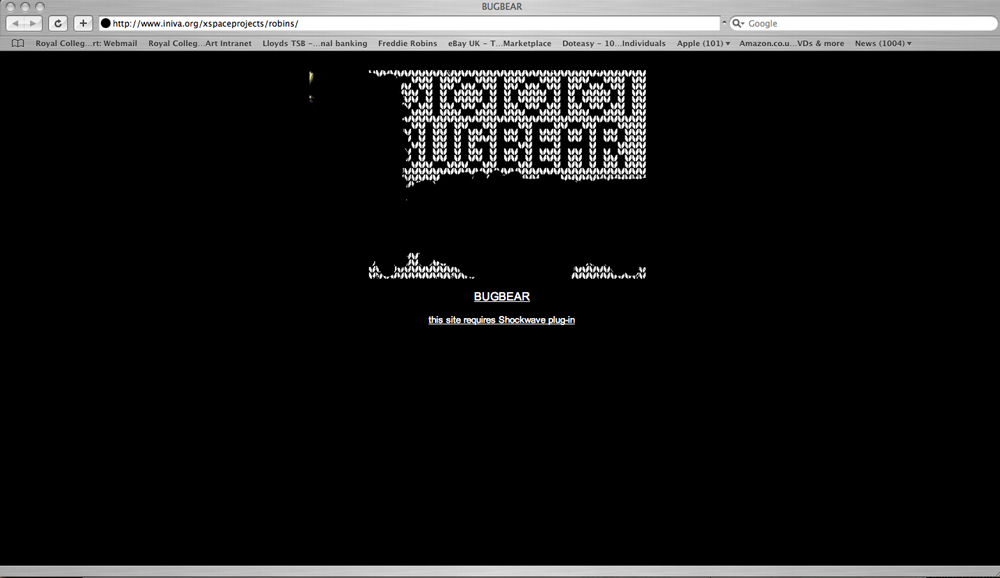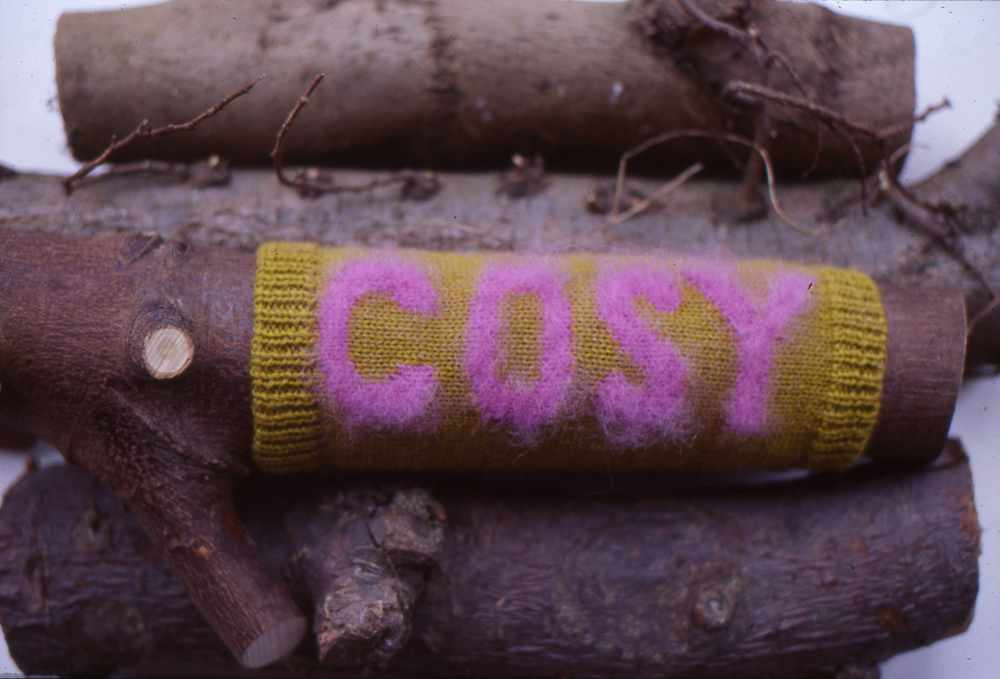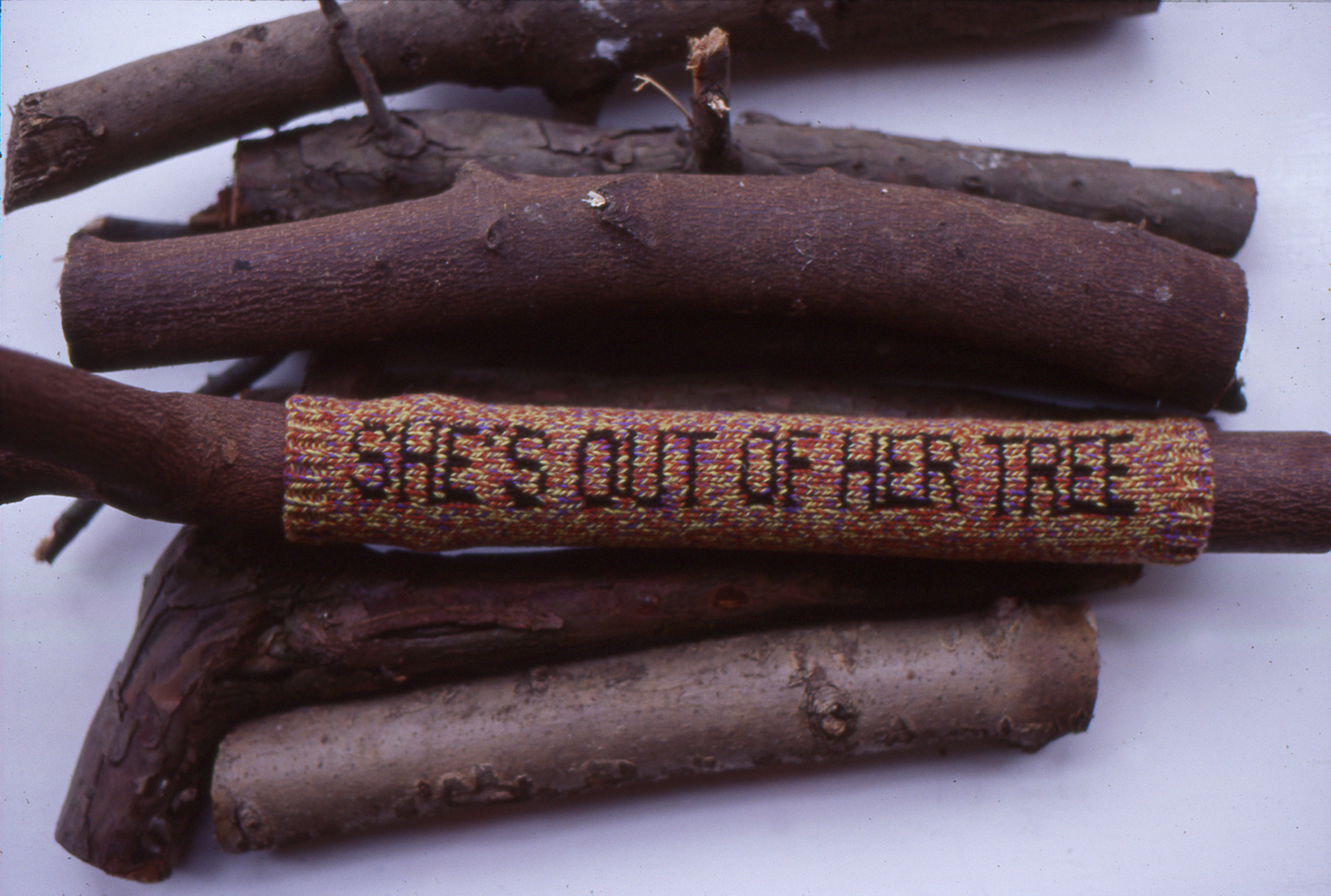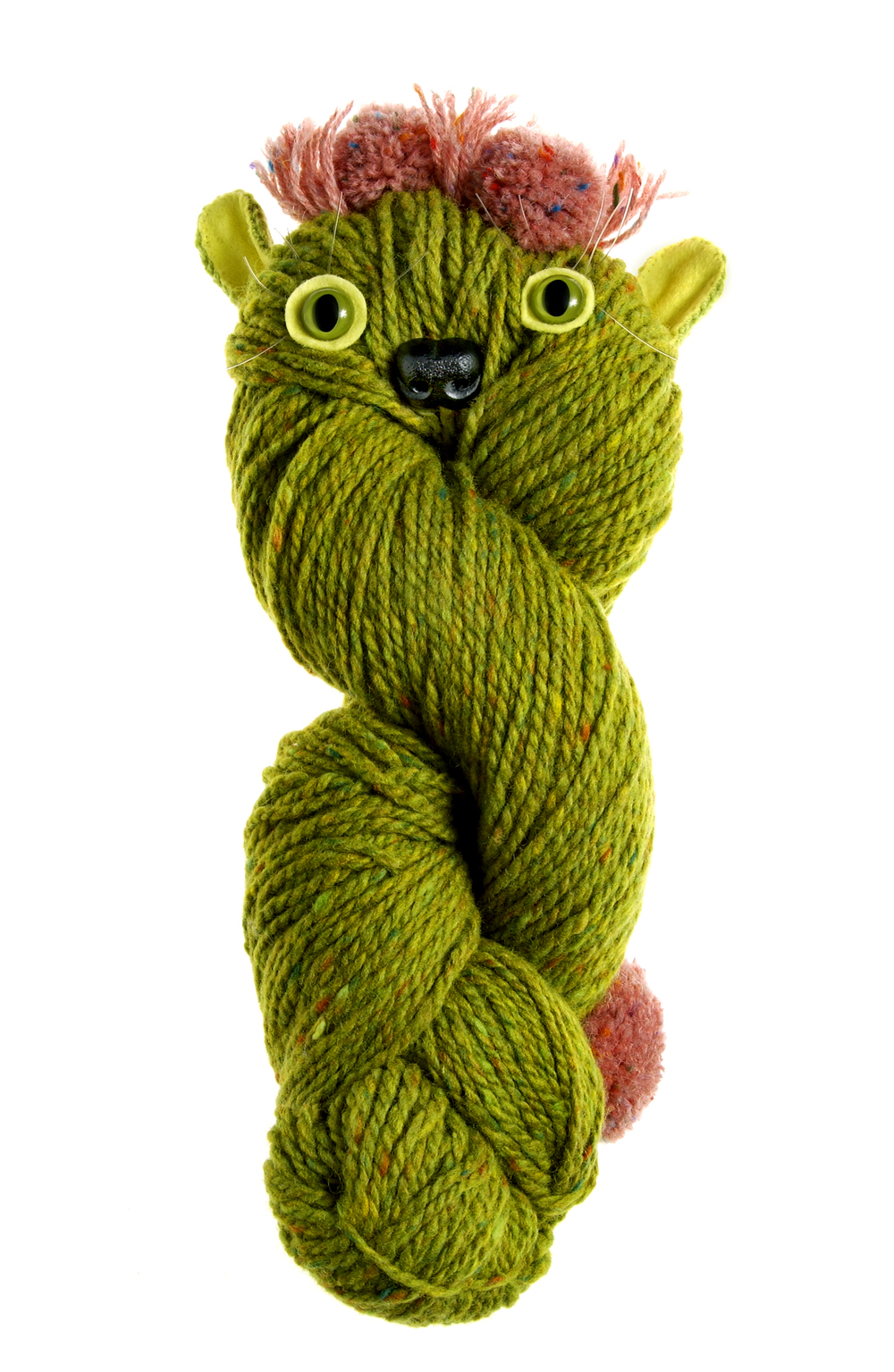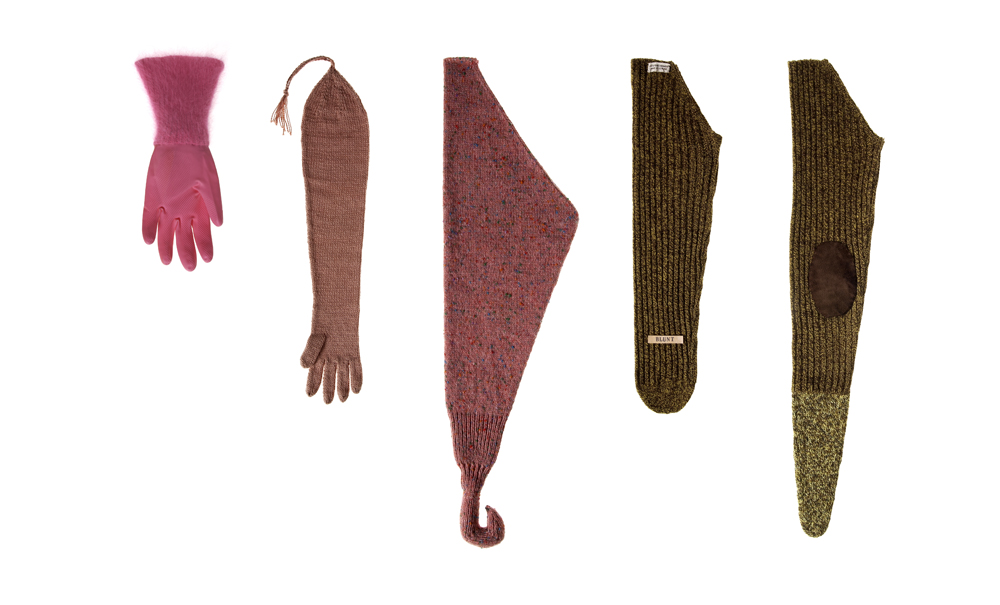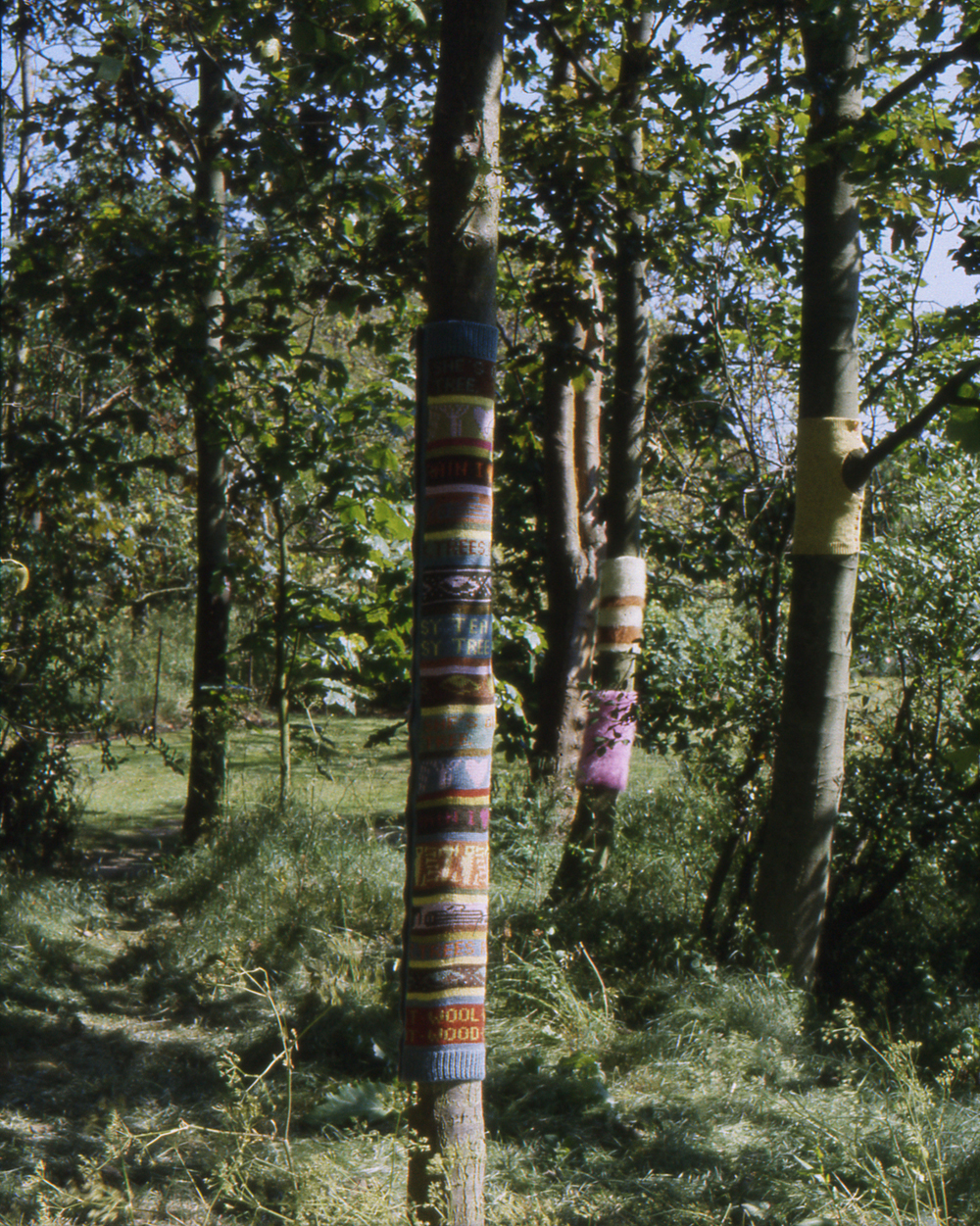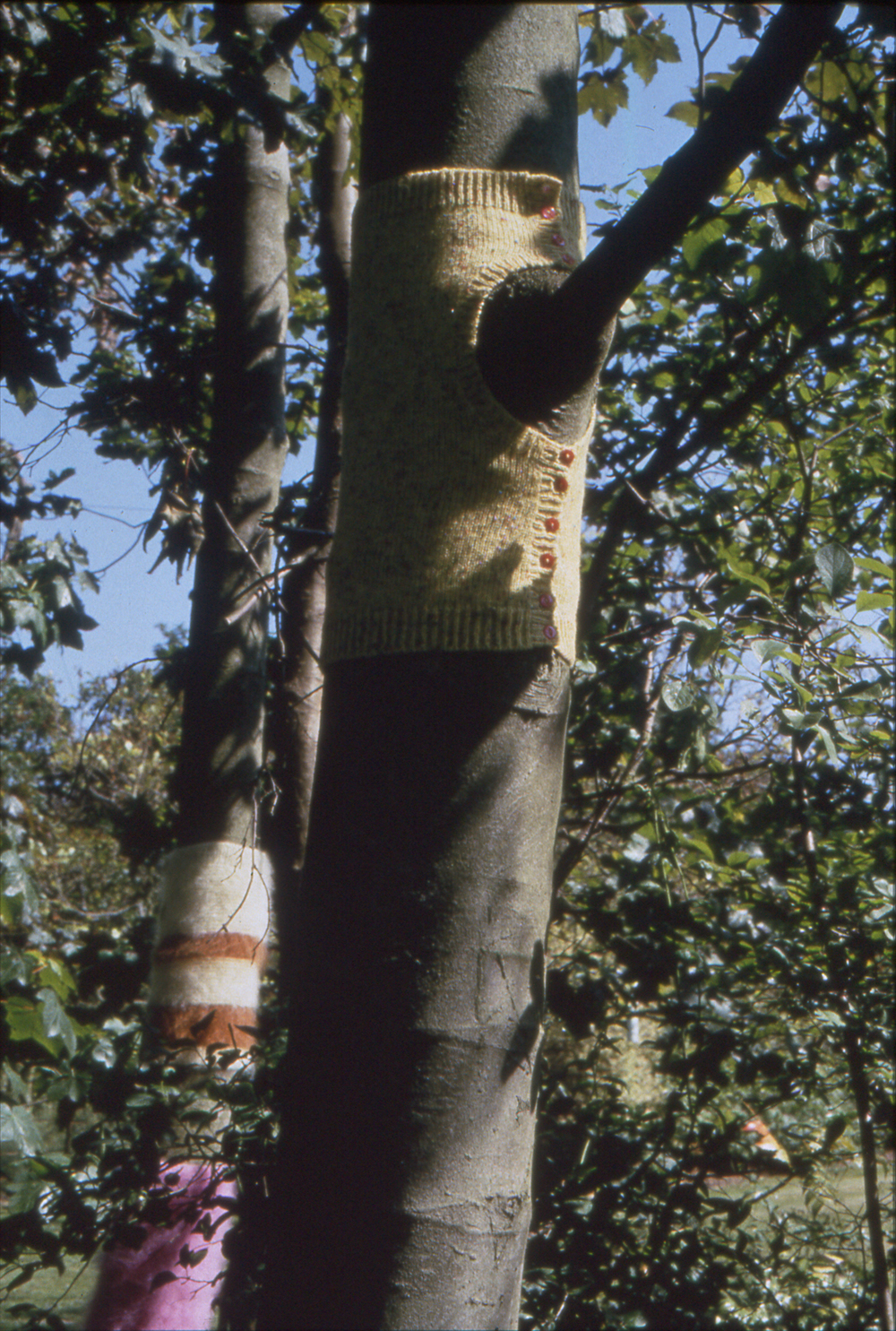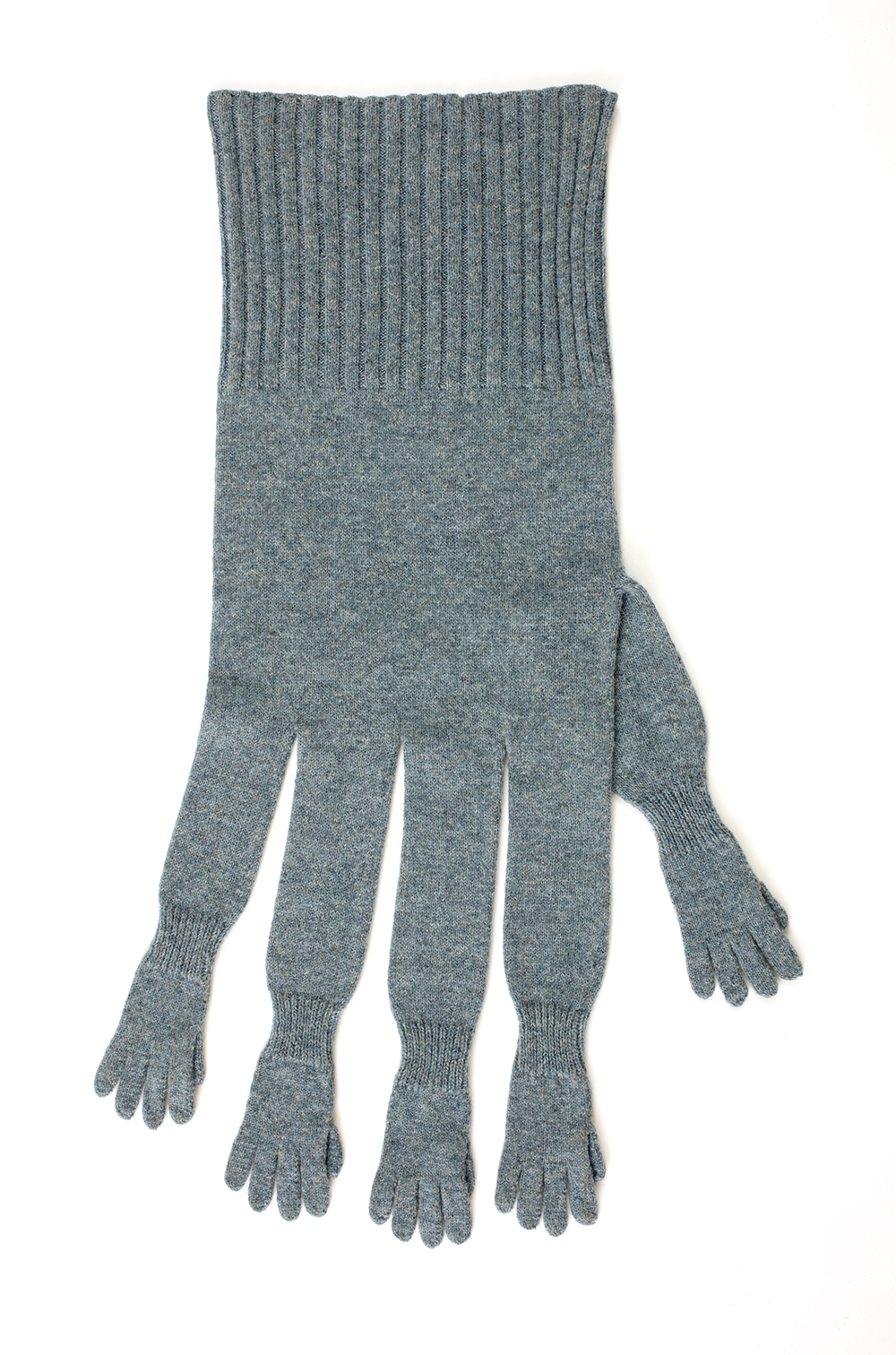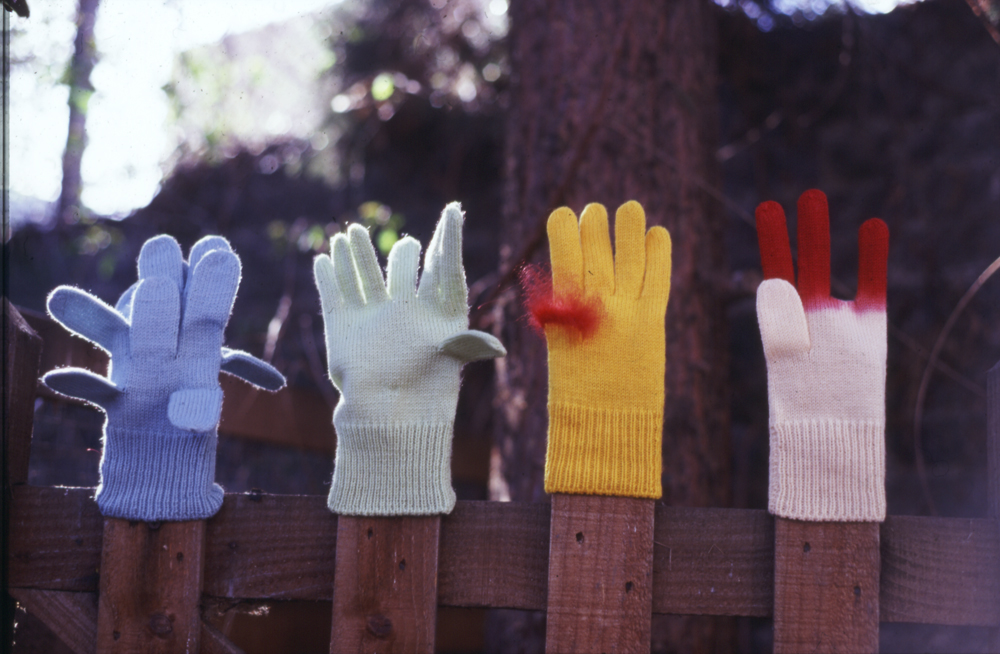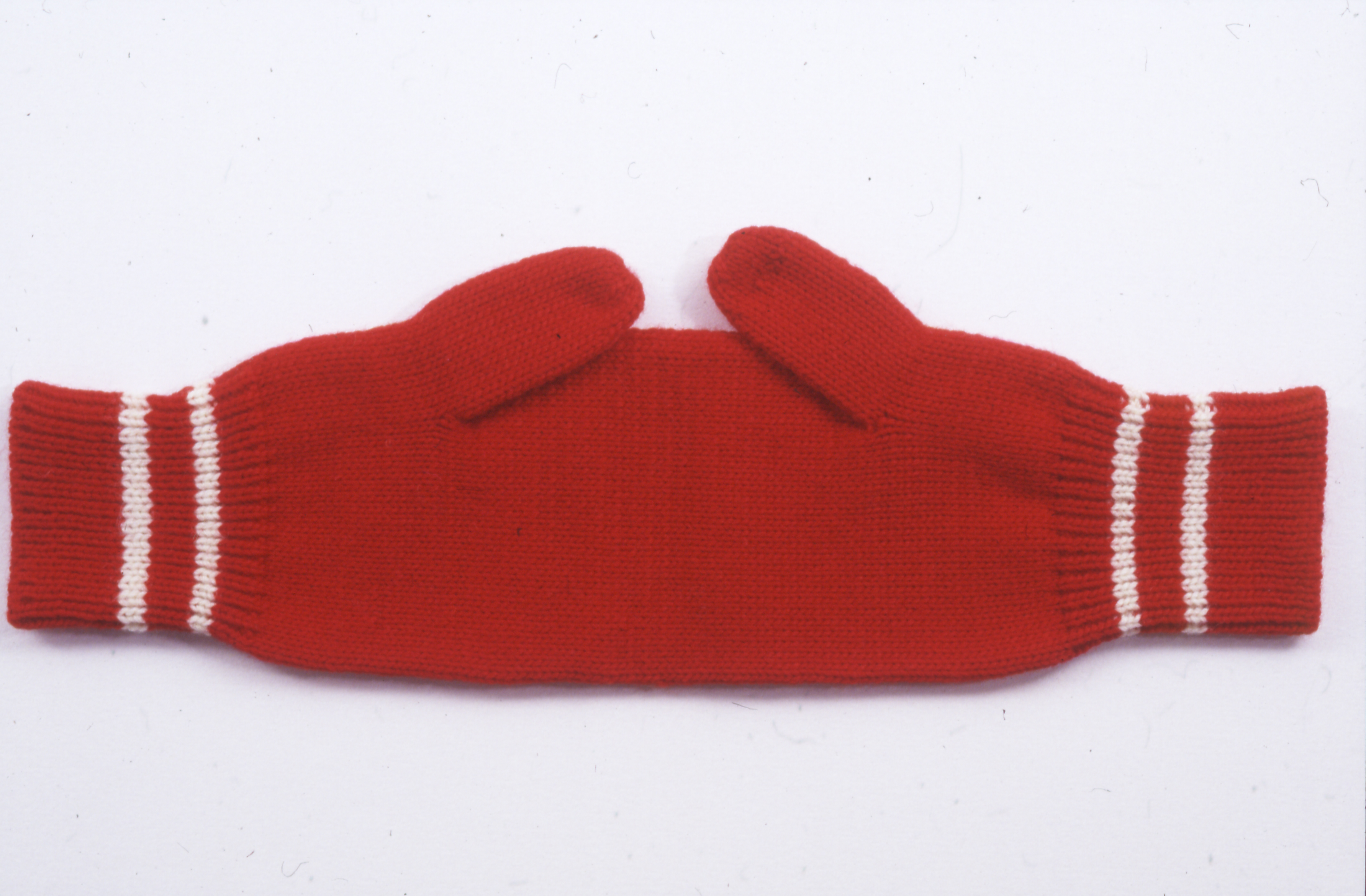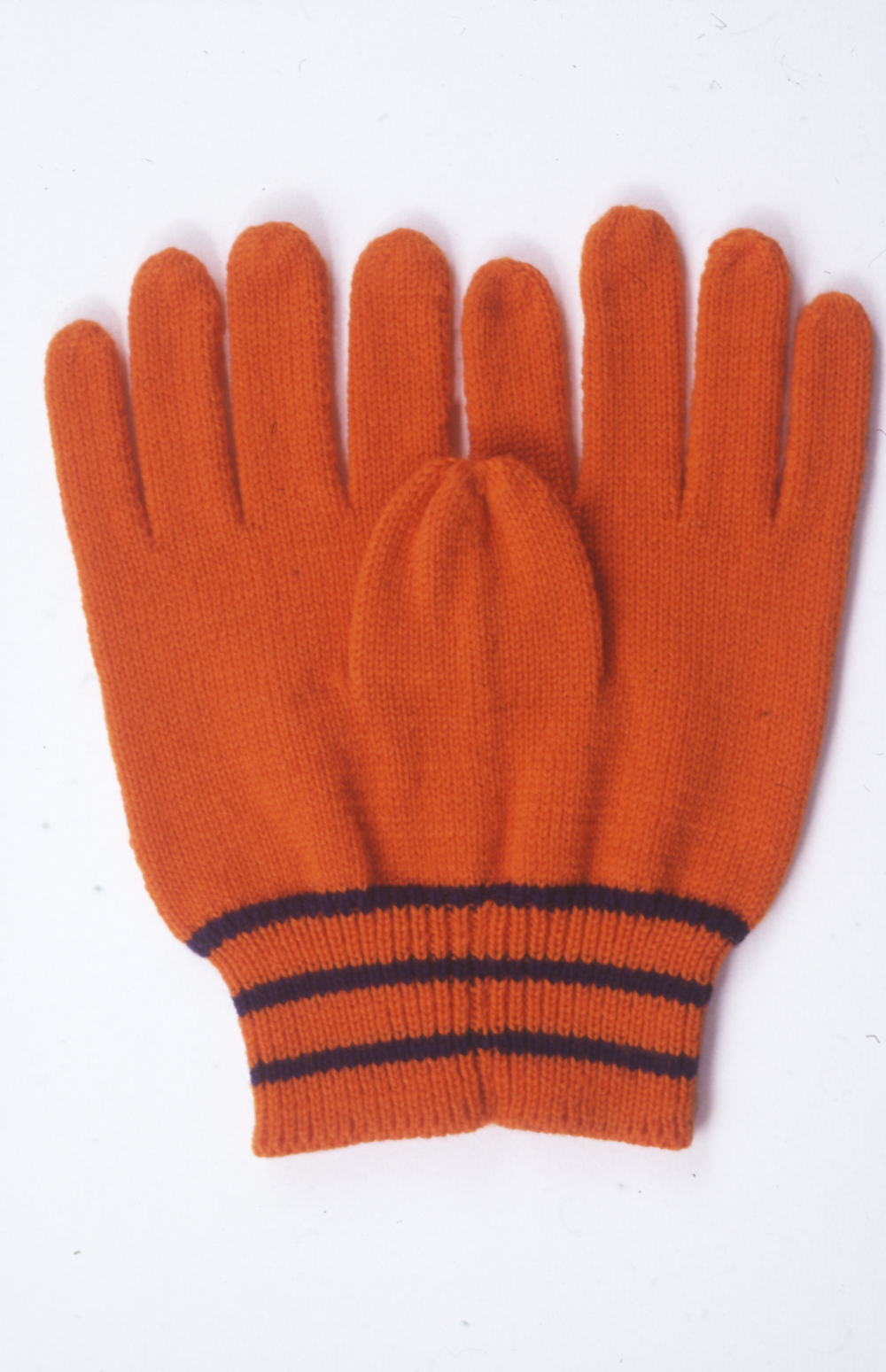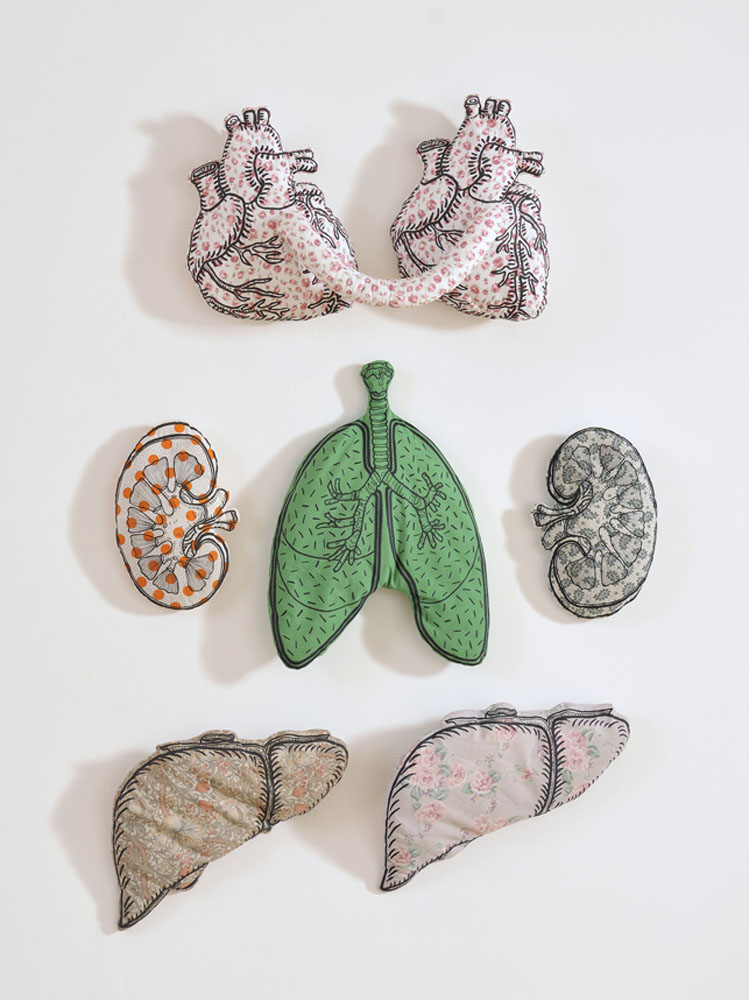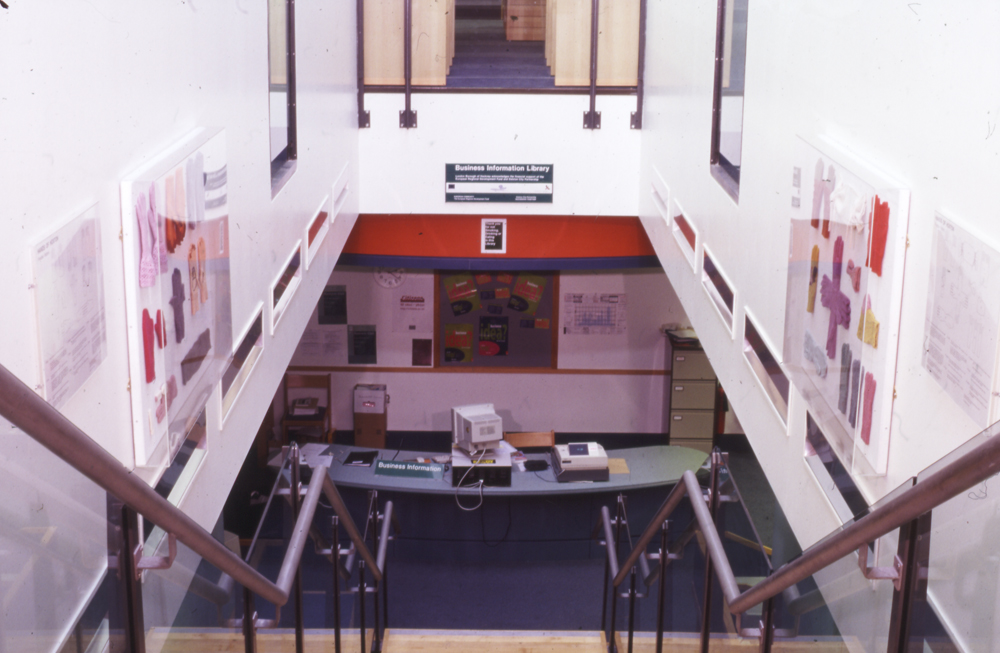

1999 machine and hand knitted yarn
in acrylic cases
Each case measures 900 × 1200 × 100 mm
Public commission by the London Borough of Hackney for Shoreditch Library
80 Hoxton Street, London N1 6LP
The knitted gloves that form the basis of this public art commission relate to a piece of local history and to a function of the library. Each glove is named after a local character, either historical or contemporary. For example: Guy is a pair of gloves with badly burnt fingers. The letter warning of the Gunpowder Plot was received in Hoxton in 1605 and Guy Fawkes was duly arrested in the cellars of the Houses of Parliament. Shoreditch Library can give you information on the government and basic legal advice.
Within this piece gloves are used to represent the hand, a universal symbol that cuts across age, race, sex, class and culture. The hand is also a symbol for much of what goes on within a library; finding the books, turning the pages, writing or using the computer keyboards. Woolly gloves are an ordinary items, worn for generations by ordinary people. Here the library and the knitted glove get given extraordinary treatment.
Freddie Robins’ first public art commission consists of two large wall mounted acrylic cases containing 17 “pairs” of knitted gloves. Explanatory panels, mimicking those used in museums, are hung next to each case. These contain the infomation that links each glove to the library and to the local area. The piece is hung either side of the main staircase down to the basement level of the library.
(Statement taken from Hands of Hoxton Press Release, April 1999)
Stories behind gloves
(Top row, right to left)
Thomas All library members have access to the library’s business library. During the 17th century Hoxton was renowned for its’ “green fingers”. Thomas Fairchild was the greatest of the Hoxton market and nursery gardeners. He was a prosperous businessman and had he been alive today he could further his success through use of the business library.
James
This library holds local and national information on health. By the 19th century Hoxton had became home to a number of private lunatic asylums. James Parkinson was a local doctor who lived at 1 Hoxton Square. He initiated many improvements and pressed for the humane treatment of the patients treated within these asylums. The illness known as Parkinson’s Disease is named after him. He identified this disease in an essay in 1817.
Kate
This library has a children’s library which includes books for the under fives. It also has a textbook and home work collection to help children with their schoolwork.
Kate Greenaway (1846 – 1901), the famous writer and illustrator of children’s books, was born at 1 Cavendish Street in Hoxton.
(Middle row, right to left)
Henry This library has local and national newspapers and holds information about what’s on.
In the 19th century Shoreditch had its own specialist Sunday morning bird market in Sclater Street. Henry Busby Bird was a notable local politician in the early 20th century. “A bird in the hand is worth two in the bush”.
Lakshmi This library stocks information on the world faiths and can supply information about local places of worship.
Lakshmi is the Hindu goddess of wealth and good fortune.
Peter This library holds story telling sessions for children.
Captain James Hook is Peter Pan’s adversary in J M Barrie’s classic children’s story “Peter Pan”.
Caroline
This library is free to join and there is no charge for borrowing books.
Thumbs up, the hand sign for “good”.
(Bottom row, right to left)
David
This library works “hand in glove” with other libraries to give you access to books and information held there.
David is the Head Librarian at Shoreditch Library (1999).
Andrew
This library provides access to the internet and the World Wide Web (WWW) for all its’ members.
These gloves represent the single-hand alphabet sign for “WWW” (World Wide Web).
All gloves were machine knitted by Freddie Robins except for Thomas which were hand knitted by Jean Arkell.
Photography: Jamie Thompson
